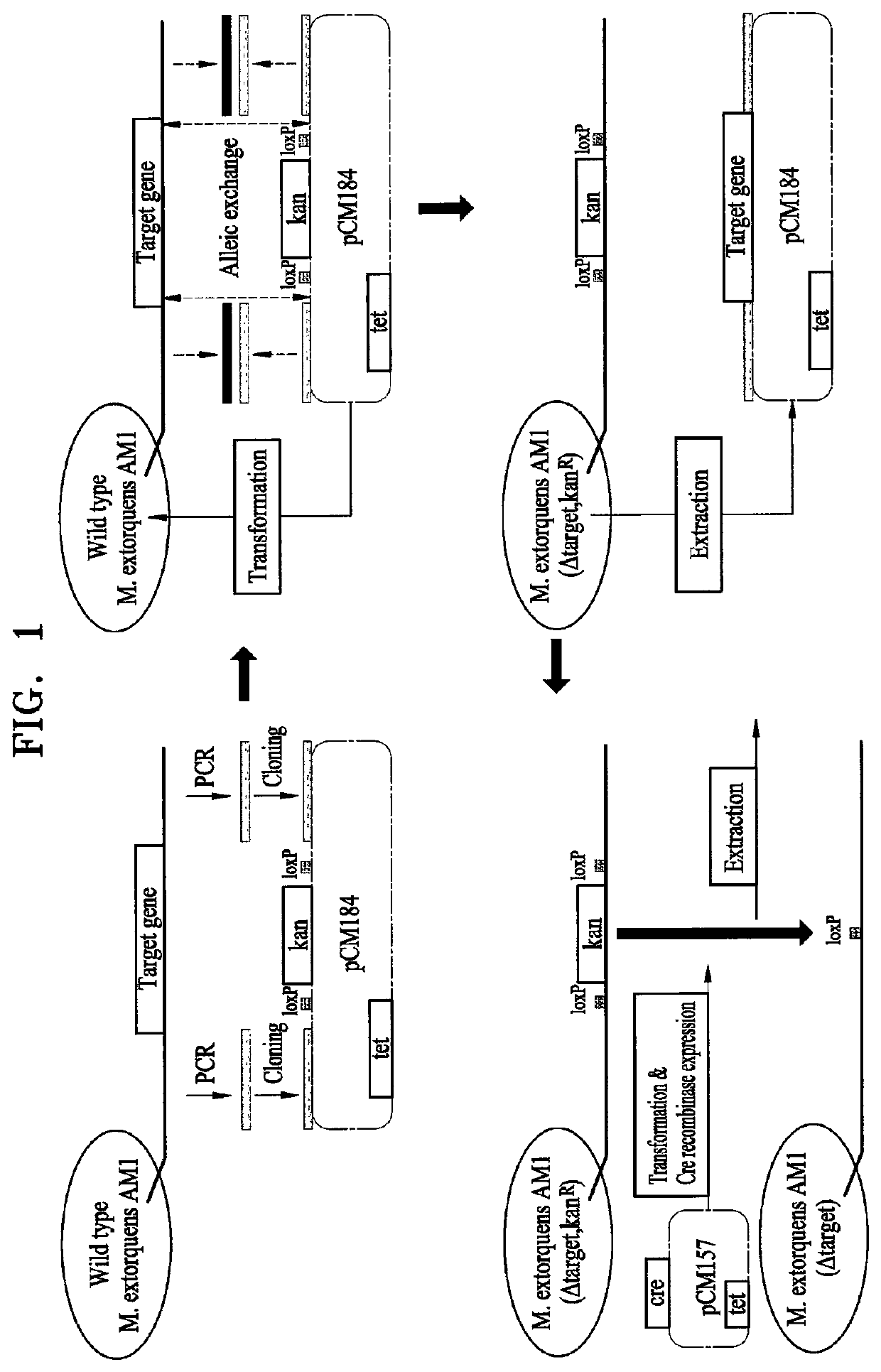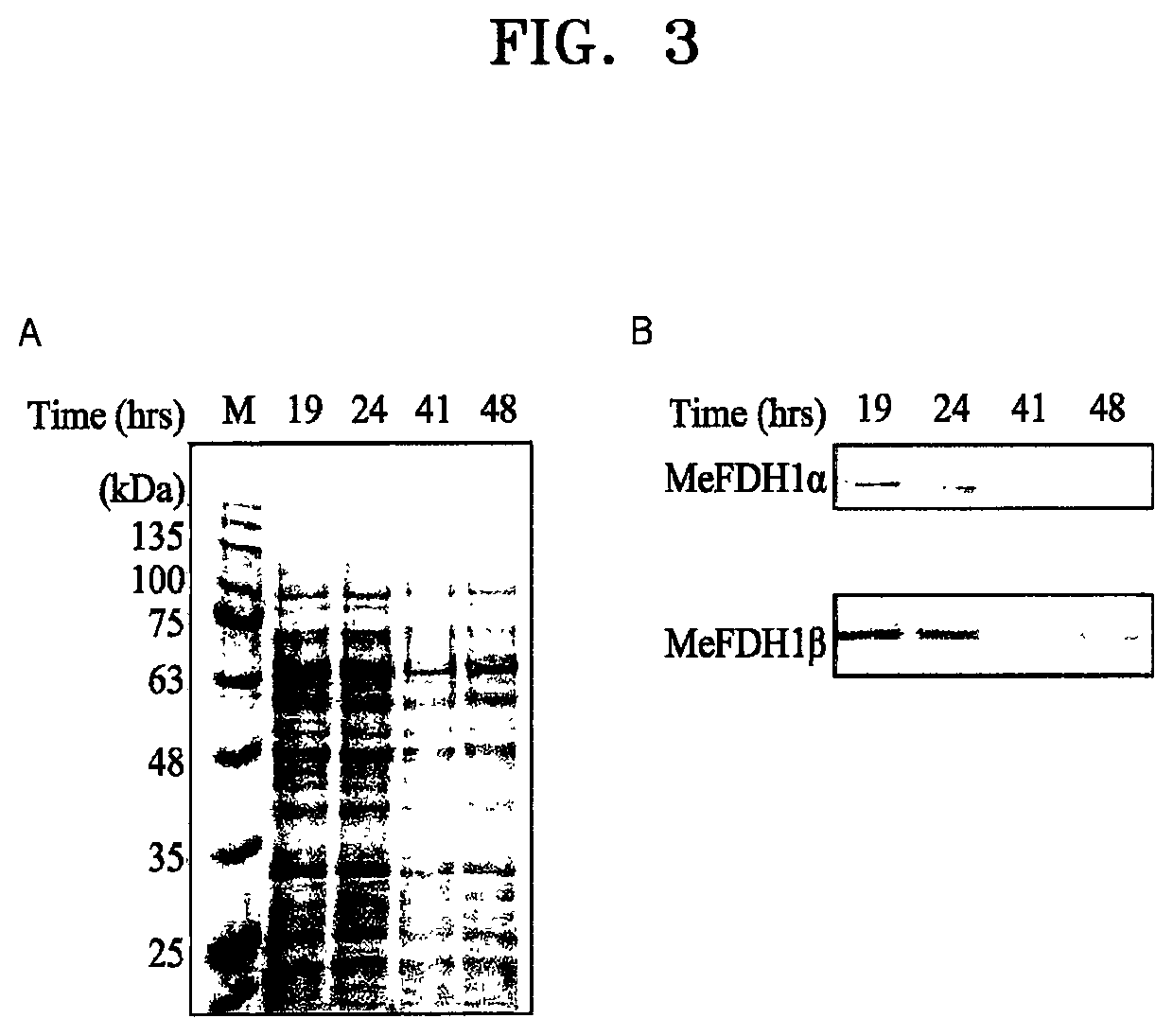Recombinant microorganism and method for production of formic acid by using same
a technology of recombinant microorganisms and formic acid, which is applied in the field of microorganisms, can solve the problems of difficult culture and transport, harsh reaction conditions and requirements of rare precious metal catalysts, and insufficient reaction selectivity of rare metal catalysts, etc., to achieve safe and efficient production of formate, facilitate the spread of a novel, and facilitate the effect of culture and transpor
- Summary
- Abstract
- Description
- Claims
- Application Information
AI Technical Summary
Benefits of technology
Problems solved by technology
Method used
Image
Examples
Embodiment Construction
Technical Problem
[0024]An aspect provides a recombinant microorganism for producing formate, from which an endogenous gene encoding formate dehydrogenase 1 alpha subunit (FDH1α) is deleted and into which an exogenous gene encoding formate dehydrogenase 1 (FDH1) is introduced.
[0025]Another aspect provides a method of producing formate, the method including culturing the microorganism in a medium.
Solution To Problem
[0026]Unless defined otherwise, all technical terms used herein have the same meanings as those generally understood by one of ordinary skill in the art to which the present disclosure belongs. Further, although methods or samples are described herein, those similar or equivalent thereto are also incorporated in the scope of the present disclosure. The contents of all the publications disclosed as references herein are incorporated in the present disclosure.
[0027]An aspect provides a recombinant microorganism for producing formate, from which an endogenous gene encoding for...
PUM
| Property | Measurement | Unit |
|---|---|---|
| volume | aaaaa | aaaaa |
| volume | aaaaa | aaaaa |
| thickness | aaaaa | aaaaa |
Abstract
Description
Claims
Application Information
 Login to View More
Login to View More - R&D
- Intellectual Property
- Life Sciences
- Materials
- Tech Scout
- Unparalleled Data Quality
- Higher Quality Content
- 60% Fewer Hallucinations
Browse by: Latest US Patents, China's latest patents, Technical Efficacy Thesaurus, Application Domain, Technology Topic, Popular Technical Reports.
© 2025 PatSnap. All rights reserved.Legal|Privacy policy|Modern Slavery Act Transparency Statement|Sitemap|About US| Contact US: help@patsnap.com



